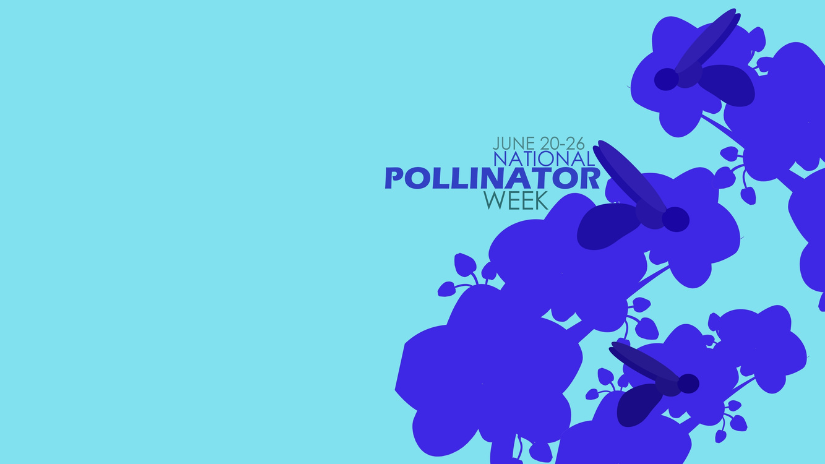By Alexa Leinaweaver, Live Animal Husbandry Coordinator, Fort Collins Museum of Discovery
Pollination is one of the most important things that happens in the natural world and without it, life on Earth would look very different. Here are key points that I would like to share out.
What is pollination?
Many plants use a technique called pollination to reproduce. The plant produces pollen, which must be transferred to another flower of the same species. Once pollination happens, the plant can make seeds, which grow into new plants.
Plants need some help to get pollen moved around, since they don’t move on their own. Only 20% of plants manage to get pollinated with only wind or water as a vector. The vast majority of flowering plants require an animal to help: a pollinator.
What are pollinators?
Many species help pollinate plants: bees, wasps, beetles, flies, moths, butterflies, hummingbirds, and bats.
In Colorado, our most common pollinators are: more than 250 species of butterfly, 946 species of bees, and more than 1,000 species of moth.
Why should you care about helping pollinators?
Humans depend on plants for many things. A small sample:
- Take a deep breath. Feel that good clean air in your lungs? Plants consume carbon dioxide, which is a poison for us, and produce oxygen, that we breathe.
- Eat a strawberry. Many fruits and vegetables we enjoy depend on pollination.
- Have a glass of water. Plants can filter pollutants from water, making it safer for humans to drink.
- Heal your pain. Many medicines, like aspirin, are derived from plants. Humans have been using plants to heal themselves for thousands of years.
- Look at your house, or a building nearby. Chances are, it’s largely made of wood and other plant-derived products.
- Wash up. Many soaps, shampoos, and other cleaners are made from plants.
- Get dressed. Many fabrics, like cotton, linen and bamboo, are made from plant materials.
How can you help pollinators?
There are two big threats to pollinators that you can help with.
Many species that act as pollinators are in decline due to something called habitat loss. The environment that these animals evolved to live in is decreasing, largely due to human activity. Any time a suburb is built where there used to be wild lands, the animals that depend on it will die. What can you do? Look up native plants and add them to any landscape you can, so that pollinators have space to live alongside humans. In Fort Collins, try planting prairie wildflowers, like chocolate daisies, in your flower beds instead of cultivated flowers from somewhere else in the world. Have a native plant like yucca in a pot on your balcony. Tell your friends and neighbors to do so too. Remind your representatives that we need to make space for our wildlife neighbors.
The other big factor affecting many pollinators is the common use of herbicides and pesticides. Many of these have been found to affect species that we actually like. In the news recently (spring 2022) is a common herbicide, glyphosphate, that turns out to kill bees as well as the intended weeds. What can you do? Read about any herbicide or pesticide and find out what else it’s going to do, and if you must use it follow the directions precisely. Or, use other ways of controlling pests such as trimming or removing infested plants by hand.
Pollinators at Fort Collins Museum of Discovery
Check out the honeybee colony featured in our Animal Encounters Zone. These bees form a thriving colony that go out and collect nectar – and pollinate flowers – every day. Come see them hard at work!
More museum resources about pollination:

